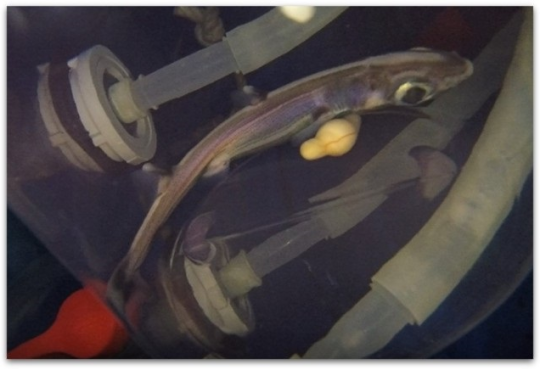AN ETERNAL CHEMICAL that has been widely used for years has been linked to the development of one of the deadliest types of cancer

Although it has not been officially used for more than 20 years, this chemical can still be detected in the environment around the world.
Numerous chemicals created by man to improve industry have proven to be extremely harmful over time. We can add one more to that list, which was in wide use until the end of the 20th century.
Known as the “eternal chemical,” PFOS (perfluorooctanesulfonic acid) has been linked to liver cancer in humans in a recent study published in JHEP Reports. It was used for many years as a key ingredient in Scotchguard waterproofing agent, and was withdrawn from use after some tests showed it was harmful to the environment.
However, even though it has not been officially used for over 20 years, this chemical can still be detected in the environment around the world.

A study conducted by scientists from the University of Southern California and the Icahn School of Medicine at Mount Sinai confirmed the link between this “eternal chemical” and a particularly deadly form of liver cancer.
As noted in the study, hepatocellular carcinoma (HCC) is responsible for four out of five cancer cases worldwide, and is also considered one of the deadliest types of cancer. The greatest risk factor for the development of HCC is considered to be cirrhosis of any cause – excessive alcohol consumption, diabetes, obesity and fatty changes in the liver, and infection with hepatitis B and C viruses.
Scientists report that the overall incidence of HCC has decreased over the past decade, but the increase in the number of obese people and people suffering from high cholesterol may increase the number of HCC again. Environmental factors could now be added to that. Namely, scientists have determined that there are traces of PFOS, but also perfluorooctanoate (PFOA) and perfluorohexane sulfonate (PFHxS) in the water, and due to their half-life of seven years, they will be there for some time.
Previous studies have already determined that a large percentage of the world’s adult population has measurable concentrations of these compounds in their blood (in the United States this number is as high as 98 percent), so scientists are wondering if there is a level of contamination that can be considered safe?
Researchers from the University of Southern California, in collaboration with the University of Hawaii, analyzed the blood of 50 people diagnosed with HCC and compared it with samples from 50 volunteers without the diagnosis. By comparing the levels of different types of chemicals in blood samples taken before the development of liver cancer, scientists were able to link the presence of PFOS and the occurrence of HCC.
Scientists have determined that PFOS alters the normal processes of glucose metabolism, bile acid metabolism, and the metabolism of a type of amino acid called branched-chain amino acids in the liver. Disruption of normal metabolic processes in the liver can cause more fat to accumulate in the liver, a condition known as non-alcoholic fatty liver disease, or NAFLD. In recent years, there has been a dramatic and unexplained increase in NAFLD worldwide, which is concerning because people with NAFLD have a much higher risk of developing liver cancer.
Those with 10 percent PFOS in their blood were 4.5 times more likely to develop HCC than those with lower levels of the chemical.
This study fills an important gap in our understanding of the true consequences of exposure to these chemicals, said the study’s lead author, Leda Chaci, professor of public health at the Keck School of Medicine.
Although this study could provide new insights into the mechanisms of liver disease caused by environmental factors, experts caution that a larger study is needed to confirm their conclusions. Also, they add, it is necessary to determine exactly what level of chemicals in the environment (and then the human body) might be “safe” in order to know how to limit their use in time.








